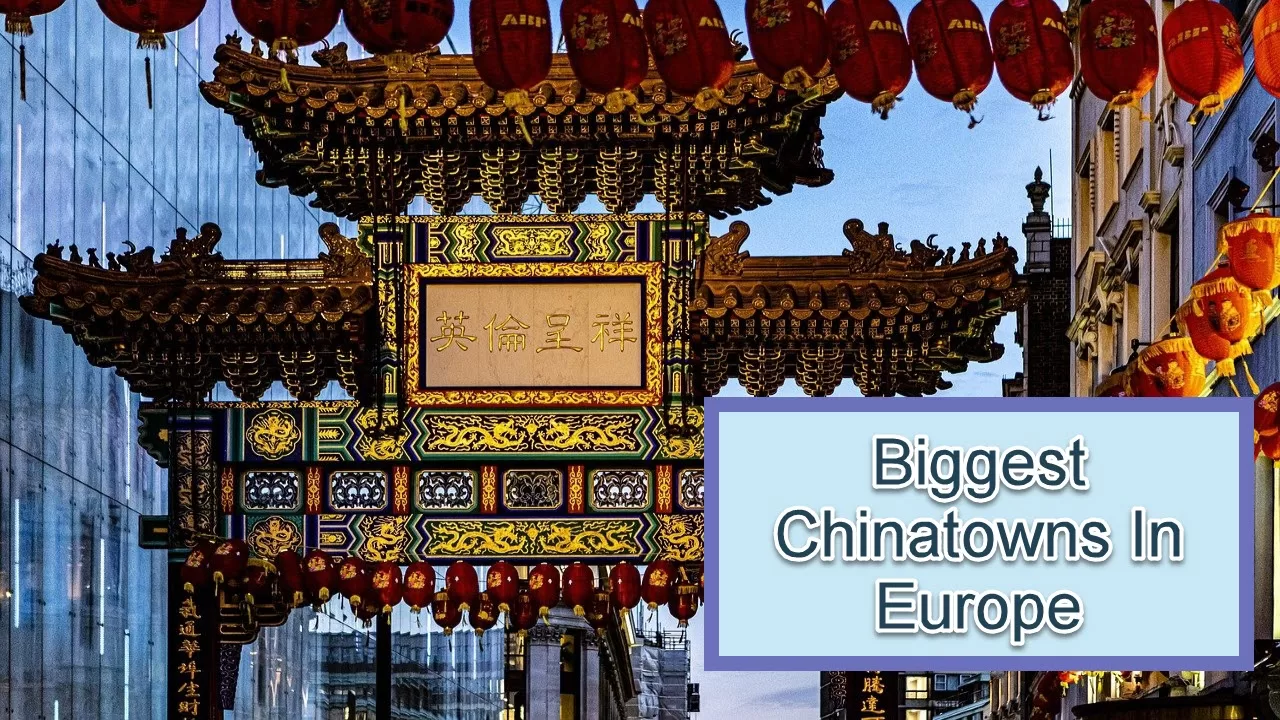A Chinatown is an ethnic Chinese community outside of mainland China, Singapore, Macau, Hong Kong, or Taiwan, usually in a crowded city. Chinatowns can be found all over the world, in Europe, Asia, South America, North America, Africa, and Australasia.
The majority of Chinatowns arose as a result of mass Chinese immigrants to an area where there were no or very small Chinese population. The world’s oldest Chinatown, built in 1594 is found in Binondo, Manila.
In major European capital cities, there are a number of urban Chinatowns. Let’s take a look at some of the biggest Chinatowns in Europe. If you want to learn more about these Chinatowns in Europe, scroll down and continue reading.
Biggest Chinatowns In Europe

Chinatown In London, England
London’s Chinatown is an ethnic enclave in London’s City of Westminster, bordered to the north and west by Soho, and to the south and east by Theatreland. The community has taken up residence in and around Gerrard Street.
There are several Chinese restaurants, bakeries, supermarkets, souvenir stores, and other Chinese businesses in the area. Limehouse in the East End was home to the first Chinatown. Limehouse in the East End was the first Chinatown in London.
Chinatown was first established in the East End of London, in the Limehouse neighborhood. The Chinese population of London was centered in Docklands around the beginning of the twentieth century, and businesses catered to the Chinese sailors that visited the region. Rather than the Chinese restaurants and supermarkets of today’s Chinatown, the region was known for exaggerated rumors and tales of slum dwellings and (then-legal) opium dens.
Despite the fact that much of the neighborhood was damaged by air strikes during the Second World War’s Blitz, few ethnic Chinese elderlies continue to live in this area. Following WWII, however, the rising popularity of Chinese cuisine and an inflow of Chinese immigrants from Hong Kong resulted in the opening of many Chinese restaurants throughout the world.
Because London’s Chinatown is compact, the best way to observe the buildings and streets ornamented with Chinese dragons, lanterns, and symbols is by walking. London Chinatown also has the country’s largest Chinese gates in the country.
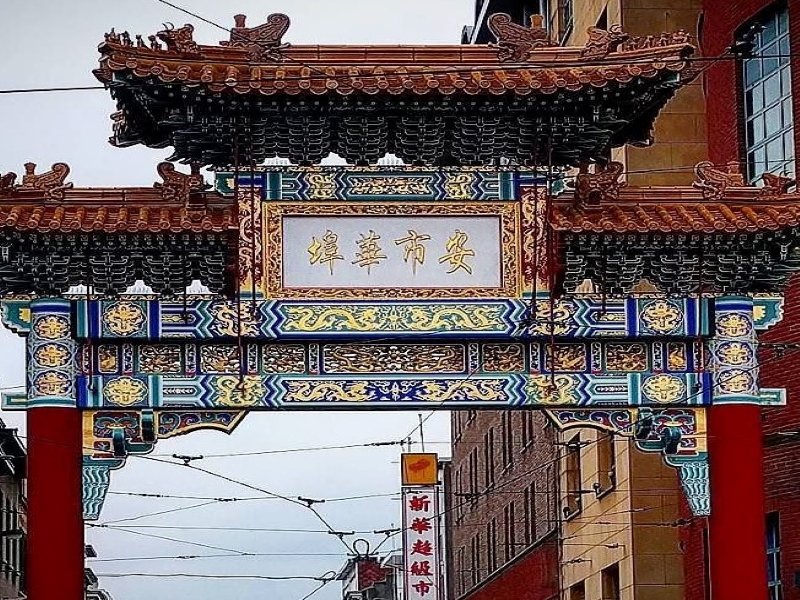
Chinatown In Antwerp, Belgium
Antwerp’s Chinatown is the only official Chinatown on Belgian tourist guide maps and booklets, as designated by the Belgian government.
Another Chinatown in Europe is located on Van Wesenbekestraat in Antwerp, Belgium. This Chinatown is well renowned for its pan-Asian ambience, having historically supported the Chinese minority that settled in Antwerp after WWII. The district is home to a plethora of Asian eateries serving Chinese, Indian, Japanese, Thai, Pakistani, and Nepalese cuisines. Pan-Asian organizations and businesses supporting the Indonesian, Nepali, Filipino, andChinese communities can be found throughout the district, as can the country’s largest Asian supermarket (Sun Wah), which stocks items from China, Japan, Thailand, Korea, the Philippines, Malaysia, Singapore, Vietnam, Indonesia, and India.
Other attractions in the district include a Buddhist temple and a kung fu mastery school. The Chinese influence is still strong. Due to the influx of traders from Thailand, Nepal, and other Asian nations, the district has been dubbed Asiatown to represent the shifting demography. Two Chinese lions protect the street both at the entrance and at the finish. After four years of preparation, a paifang known as the “Pagodepoort” (Pagoda Chinese Gate) was erected at the street’s southern entrance in 2010.
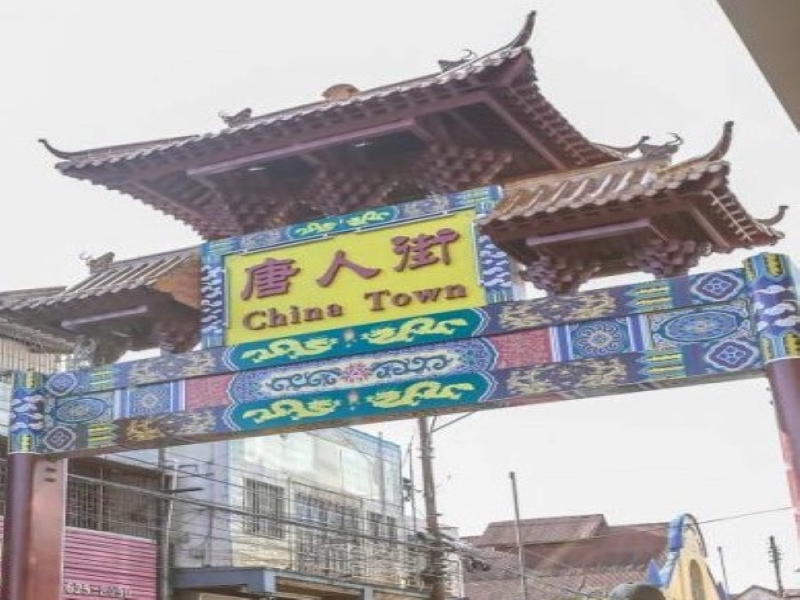
Chinatown In Spain
While Chinese immigration has occurred in Spain, it has been less than in other European countries like France, Italy, Germany, and the United Kingdom. In Spain, there are approximately 150,000 Chinese immigrants. The majority of Chinese-Spanish immigrants are descendants of mainland Chinese coolies. Others are immigrants or Chinese refugees from Macau, Taiwan, Hong Kong, Malaysia, Korea, the Philippines, Vietnam, Indonesia, and, in particular, Cuba and Puerto Rico. In Spain, Chinese immigrants tend to live in regions mixed with other immigrants and Spaniards, rather than in isolated districts, which is the iconic idea of a Chinatown. However, in other areas, Chinese immigration is sufficient to offer some streets a Chinese flavor.
Spanish Chinatowns in Madrid include Dolores Barranco Street in the Usera district, Lavapiés neighborhood or General Margallo St. in the Tetuán district, and the “Cobo Calleja” industrial park in the southern city of Fuenlabrada, which is Europe’s largest Chinese industrial sector.

Chinatown In Manchester
Manchester, England’s Chinatown is the second largest Chinatown in the United Kingdom, and the third largest in Europe. On Faulkner Street, there is an archway that was constructed in 1987, and there are several Chinese, Japanese, Korean, Nepali, Malaysian, Singaporean, Thai, and Vietnamese restaurants, shops, bakeries, and supermarkets.
The Greater Manchester area has a large Chinese British population, many of them are immigrants from former British-ruled Hong Kong. However, Hong Kong immigration to the UK has slowed off in recent years, whereas Mainland Chinese immigration to the country has increased.
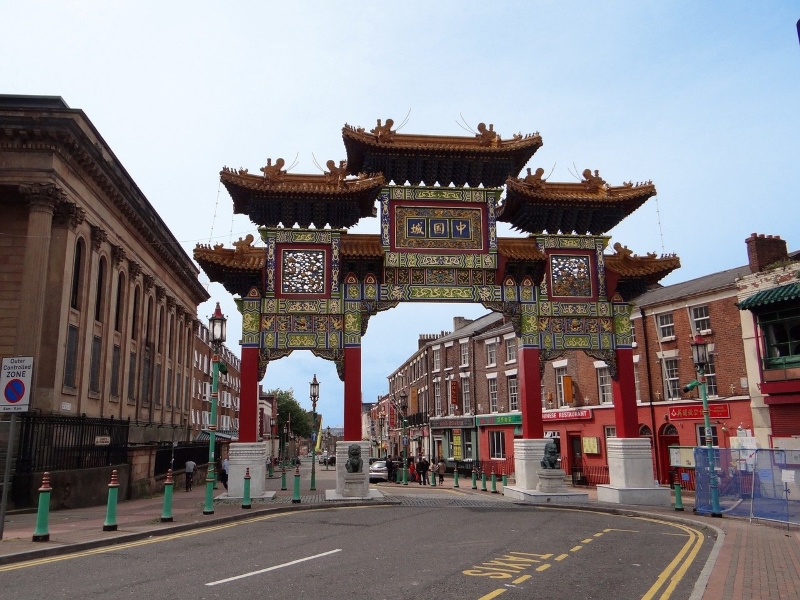
Chinatown In Liverpool
Chinatown is an ethnic community in Liverpool that is home to Europe’s oldest Chinese community. The Chinatown is situated south of the city center, home to many Chinese businesses, including restaurants, supermarkets, Chinese establishments as well as facilities for the Chinese communities. The paifang on Nelson Street is the largest, multiple-span arch of its kind outside of China, and the area is also known for its Chinese-style architecture.
Restaurants, supermarkets, such as Chung Wah and Hondo, book stores, and other businesses owned by Chinese residents can now be found throughout the district. Because of the city’s large and growing Chinese student presence, a new network of companies catering to the needs of fairly recent Mainland Chinese students has emerged, complementing the city’s existing China town.
Many Chinese community organizations, such as the Liverpool Chinese Gospel Church and the Liverpool Chinese Christian Disciples Church, are also located in China town.

Chinatown In Sheffield
Although the Sheffield Chinese community is located on the center of London Road in Highfield, the city does not have an official Chinatown. The Sheffield Chinese Community Centre is located here, as are many Chinese restaurants, supermarkets, and community stores. Sheffield’s Chinese community is pushing for the street to be officially called Chinatown.
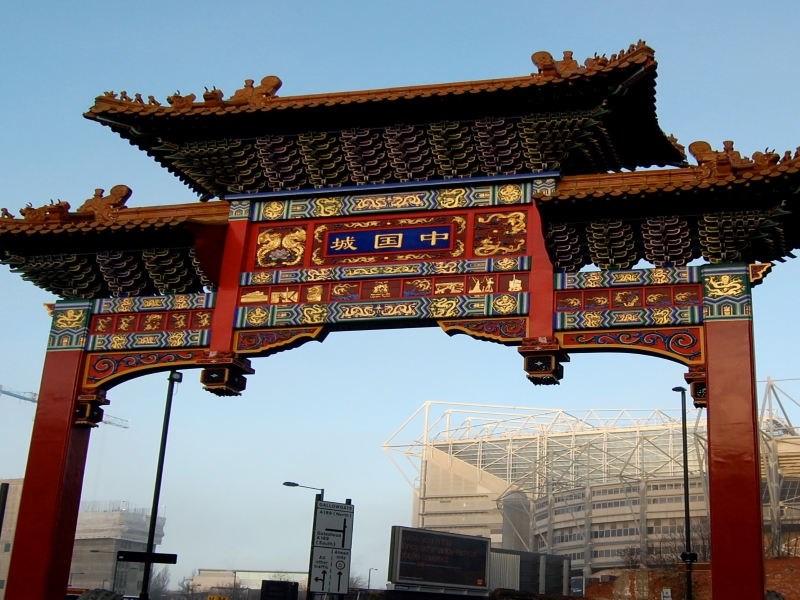
Chinatown In Newcastle
Newcastle’s Chinatown is a district in Newcastle upon Tyne, located in the city’s west end, along Stowell Street, on the outskirts of the city’s commercial and shopping district. It is one of England’s five Chinatowns. As part of the preparations, mainland Chinese engineers recently built a £160,000 entrance.
The Chinatown is located in Grainger Town, Newcastle’s historic core, on land that was previously part of the Blackfriars monastery. Stowell Street is the major street of the Chinatown, with “chinatown” printed on street signs to emphasize this. The district’s northeast limit is determined by Stowell Street and one of the few remaining segments of Newcastle town wall. The Chinese arch, which faces St James’ Park, is located at the north end of Stowell Street on St Andrew’s Street. Several other enterprises, such as restaurants, food shops, and cafés, can be found south and west of Stowell Street, on the streets and passages around Blackfriars and The Gate, including Charlotte Square and Low Friar Street.

Chinatown In Leeds
Even though there is no official Chinatown in Leeds, the northeast section of the city center is known as Chinatown due to the appearance of several longstanding Chinese restaurants, supermarkets, and other commercial establishments. The compact “Chinatown” is centered on one of the city’s largest outdoor car parks, with the majority of Chinese businesses on Vicar Lane on the west side and Templar Lane and Templar Place on the east side.
Plans to convert the place into an official Chinatown, complete with Chinese gates, have stalled, owing to the city’s Chinese community’s dispersion around the city and outlying suburbs. Furthermore, the city center has just as many, if not more, Chinese and other East Asian restaurants, minimizing the necessity for an official Chinatown.
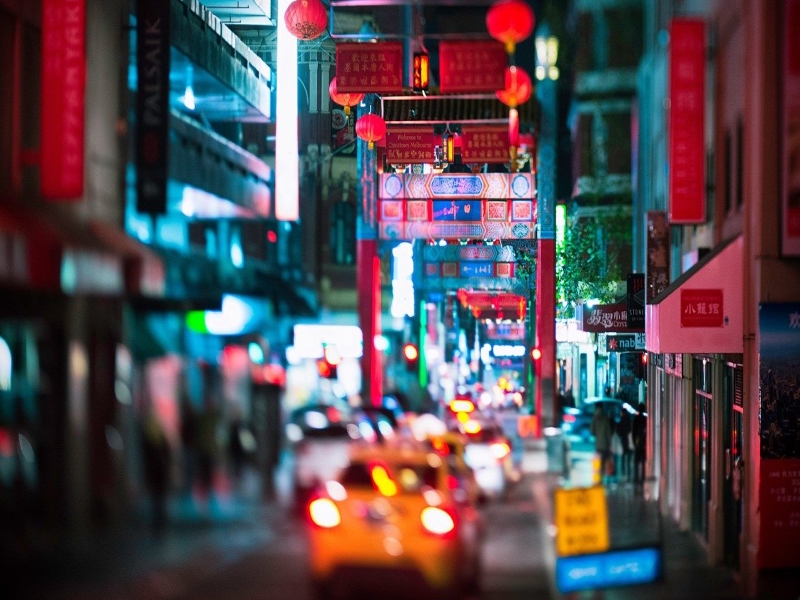
Chinatown In Paris, France
There are numerous Chinatowns in Paris. The largest Chinatown is located in the 13th arrondissement / 13th district, and it is the largest Chinatown in Europe.
The Les Olympiades complex is located in Parisian Chinatown, which is roughly surrounded by Avenue de Choisy, Avenue d’Ivry, and Boulevard Masséna. When Vietnamese refugees arrived in the area after the Vietnam War in the 1970s, the area was originally an ethnic Vietnamese district. Ethnic Chinese from Indochina, Cambodians, and Laotians, were among the following waves of immigration, who fled their countries after communist takeovers.
Even though many of the earlier Vietnamese immigrants quickly merged into French society and relocated to other parts of Paris and the Île-de-France region, they continue to have a strong commercial and cultural appearance in the area. Commercial activity in this neighborhood is dominated by Chinese and Vietnamese businesses, with a smaller number of Laotian and Cambodian establishments. The district has a population of about 50,000 Chinese people, although there are also large Vietnamese and Laotian groups. Tang Frères and Paristore Asian specialty supermarkets have flagships in Chinatown that are near to each other.
The best Chinatown to visit is in Paris, notably for the spectacular Chinese New Year parades, which transform the streets into a lively sight of martial arts artists, bright dragon performances, and more.
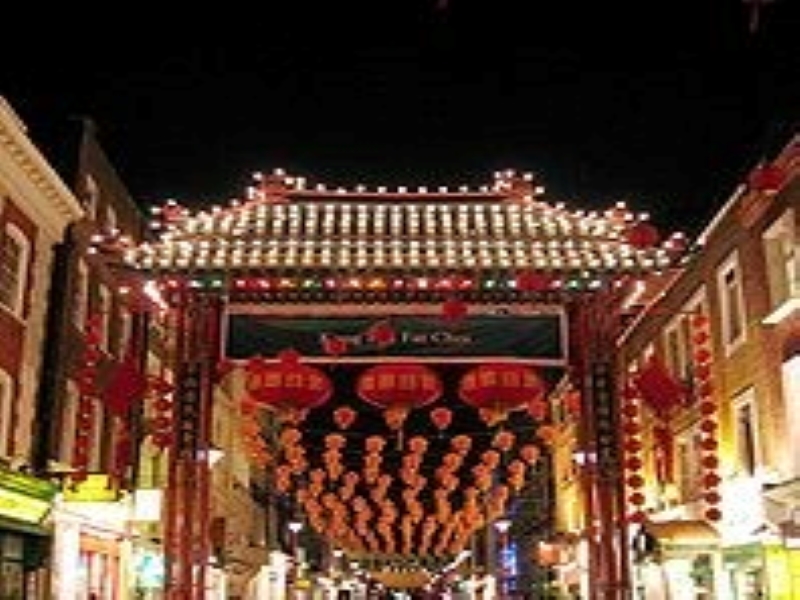
Chinatown In Portugal
Varziela Chinatown (Chinatown da Varziela), also known as Vila do Conde Chinatown, is siuated on the outskirts of Vila do Conde in Coastal Northern Portugal and is Portugal’s primary Chinatown. There are about 200 Chinese stores in the community’s core, which has a population of 1500 ethnic Chinese on the year 2015. Varziela Chinatown was founded in 2001 in a deteriorated industrial neighborhood and quickly became a Chinese gateway for Portugal and Spain, gaining Indians and other minorities in recent years. It recovered from the 2008 financial crisis, when it collapsed. At its peak, the early community was thought to total 160 stores and 600 ethnic Chinese residents.
Varziela Chinatown is noted for its illicit casinos, which are located in an area where the legal Casino da Póvoa, one of the community’s main entertainment venues, hosts the traditional Chinese New Year celebration.
Other Chinatowns in Portugal are in Lisbon, around Martim Moniz, largely in the shape of shopping malls, and Porto Alto Chinatown.
When Macau was returned to Mainland Chinese control in 1999, a few of the first Chinese immigrants to Portugal came from there, while some arrived from Laos, Cambodia, and Vietnam. Many Chinese people migrated to Portugal from Brazil. Apart from Portuguese, the Chinese population in Portugal also speaks Cantonese, Mandarin, and a hybrid Cantonese-Portuguese creole known as Macanese or Patuá.

Chinatown In Birmingham
Birmingham, England’s Chinese Quarter is situated on the city’s southside. As an outcome of a concentration of Chinese-owned businesses, organizations, and social clubs, it is a primarily Chinese-influenced area. Hurst Street, Ladywell Walk, and Pershore Street are now part of the area’s boundaries.
Several of the buildings nearby have Chinese architectural details and art, such as Chinese style rooftops and wall paintings depicting historical scenes from the Silk Road in the Arcadian Centre. The Irish Quarter is located in the area’s rear, right next to a large supermarket that sells typical Chinese produce.
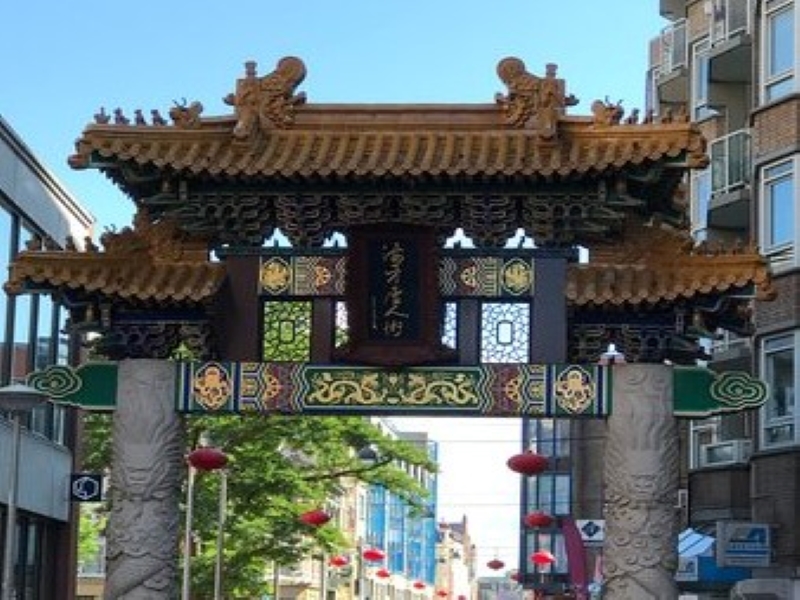
Chinatown In Netherlands
In Dutch, the terms “Chinatown” and “Chinese buurt” are used.
The Netherlands’ largest Chinatown is in Rotterdam, near the West-Kruiskade in the Oude Westen area. Around 1911, the first Chinese people arrived in the Katendrecht neighborhood. After a decade, Katendrecht’s Chinese community had grown to over 1500 persons, making it the Netherlands’ largest Chinese community.
Following a significant reduction in the number of Chinese people in the Katendrecht region, a rising number of Chinese people moved to the West-Kruiskade area near the city center. Since the 1980s, this has been Rotterdam’s main Chinatown, attracting Chinese residents from smaller Dutch cities such as Eindhoven and Deventer.
The city’s second-largest Chinatown is located near Amsterdam’s famous De Wallen red light district. Amsterdam Chinatown, which is situated between the Zeedijk and the Geldersekade, was established in the early twentieth century and revitalized in the 1980s. This neighborhood’s street signs are bilingual, which is Dutch and Chinese. The first and largest Chinese-style Buddhist temple in the Netherlands is located in Amsterdams Chinatown. This temple is called Fo Guang Shan He Hua tempel.
The Hague has the world’s third largest Chinatown.
History Of European Chinatowns
Other Chinatowns in Europe have a long and distinguished history, while others are still developing. Several early Chinese businessmen founded settlements in a number of European port locations. Liverpool, England, has Europe’s oldest Chinatown. Liverpool began importing cotton and silk from Shanghai in the early 1800s, and the company grew from there. The first Chinatown in Paris was formed in the 1910s by mainland Chinese labourers of Zhejiang region who stayed in France. Others came to Europe after working as hired workers on European ships.
Many Asian citizens of British and Continental European empires relocated to the conquering country as a result of European colonization in Asia. Immigrants from Hong Kong began migrating in great numbers in the United Kingdom in the 1950s, which resulted in the establishment of London’s second Chinatown in the Soho district. Some Chinese immigrants from Macau, a former Portuguese territory, have also settled in Portugal.
A lot of Chinese Indonesian immigrants arrived in 1998, fleeing Indonesia’s horrific pogroms against ethnic Chinese, primarily as an outcome of the Asian financial crisis.
Following the fall of Saigon at the end of the Vietnam War, ethnic Chinese boat people from Vietnam were relocated in France and Germany in the late 1970s and 1980s, coming in large numbers in Chinatown Paris, and greatly reviving the region. The existing Chinatown in Paris has a dynamic Southeast Asian ethnic Chinese character, although its newer equivalent in Belleville is primarily made up of recent Mainland Chinese. Some Chinese Vietnamese refugees appeared in Hong Kong, which was then governed by the British.

